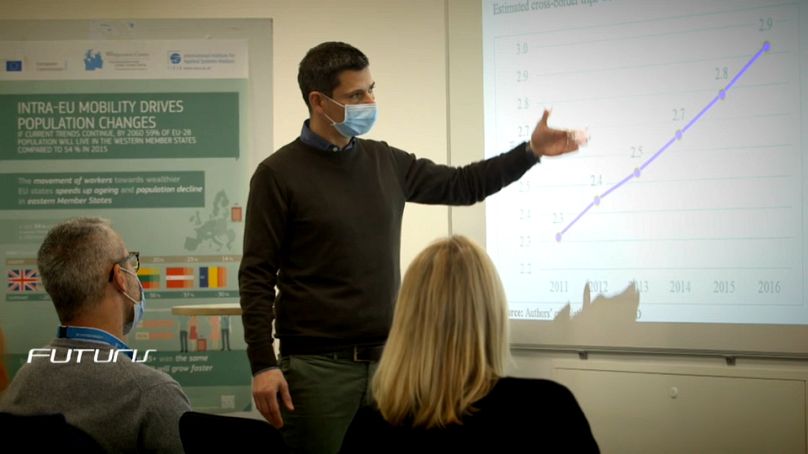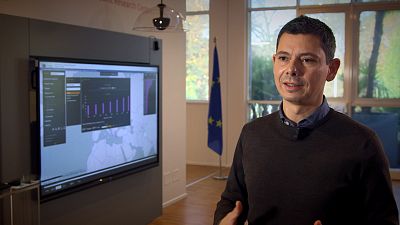In this episode of Futuris, Euronews finds out how EU researchers are developing migration data to create new opportunities.
Migration is one of the most challenging issues confronting policymakers around the world - and the data they use to help make key decisions is often difficult to analyse.
Those at the Knowledge Centre on Migration and Demography, run by the Joint Research Centre of the European Commission in Ispra in Italy, are trying to make it easier by producing in-depth data that harnesses and connects new data sources.
In this episode of Futuris, Euronews finds out how researchers are developing such data to create new opportunities.
Main sources of data collection
Mobile phones, social media and earth observation data are some of the resources used to collect data.
Researchers track anonymous digital traces on these platforms, as JRC research scientist, Michele Vespe, explained to Euronews.
"If these traces are aggregated in such a way to overcome privacy issues, ethics and data security issues, then, collectively, they can show social trends that would be unthinkable with official statistics.
"So they can complement the official statistics, increasing the timeliness of the data, because they are collected at any time, even now while we are talking, and they also give us additional perspectives," he added.
How data can help industries
The big data collected can support decision-making in various areas, including the jobs market - providing information on the distribution of workers' and their skills in one territory, as Sara Grubanov-Boskovic from the JRC explained to Euronews.
"We have this wide variety of data on European labour markets and we can understand what challenges the sectors are facing - shortages on the labour market, for example. This data also shows us that there are sectors in which migrants make a particular contribution in alleviating shortages. You can think of agriculture, health care - and the long-term care sector," she said.
A study carried out during the first wave of the Covid-19 outbreak has shown that, on average, 13% of all workers employed in key sectors during the EU’s coronavirus response, were migrants.
Marie-Cecile Rouillon is a policy coordinator at the European Commission in the Department for Migration and Home Affairs. She said:
"It is key to know what skills are needed by the labour market, in a society that is demographically ageing. It is essential to have this very global vision of migration and how migration fits into a much more global and complex context from an international point of view or at the heart of our society."
JRC scientists also carried out a multi-disciplinary exercise combining fiscal modelling with demographic projections to analyse the impact of migration on public resources, as well as the consequences on the sustainability of the European welfare systems.
Dessislava Choumelova is the head of the unit.
"For the new plan on integration, we are looking at what skills Europe needs. Are their migrants with those skills? What is the educational background that we need? How are migrants integrated? Do they have jobs? Who are they? Are they female? Are they male? And all this information comes into the integration plan," she explained.






